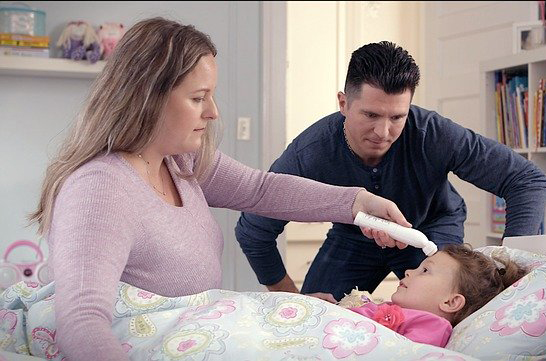Primary Care: A Crisis Ahead?
The New Yorker Magazine takes a close look (via Clifford Marks, an emergency-medicine resident at the Icahn School of Medicine at Mount Sinai) at how primary care practices and physicians are taking it on the chin due to the effects of the Coronavirus pandemic.
The article opens rather somberly:
Beverly Jordan is a partner at a family-medicine clinic in Enterprise, Alabama. Enterprise is situated in “wiregrass country”—a largely rural region, encompassing southeastern Alabama and parts of Georgia and Florida, named for the ubiquitous vegetation that takes root in its sandy soil. Her clinic is one of a few offering primary care in the area; like many independent medical practices across the U.S., it has been gutted by the coronavirus pandemic.

Even though her practice received a lifeline from the federal government’s Paycheck Protection Program (P.P.P.), Jordan had to take a pay cut, reduce staff hours, and lay off two new physicians who were about to start work. “For the first time in my career, we’re really just planning short-term,” she told me recently. “We’ve never had this level of insecurity.”
For decades, health care was America’s indomitable industry. While employment in other sectors—retail, manufacturing, construction—rose and fell with the business cycle, clinics, hospitals, and medical practices steadily added jobs. But the pandemic has changed health care’s trajectory. Hospitals now find themselves in dire financial straits as they forgo revenue from elective procedures, and a surge in unemployment is shifting patients from private insurance plans to Medicaid, which is less remunerative for doctors. Some rural hospitals, whose financial footing was already tenuous, are facing the prospect of closure.
The story pinpoints family-medicine, internal-medicine, pediatric, and obstetrics-and-gynecology clinics as most vulnerable. In-person appointments are becoming a rarity. In May of this year primary-care doctors were surveyed, and the findings were already chilling that early into the pandemic: Nearly a fifth had temporarily closed their practices, owing to the pandemic, and two in five had laid off or furloughed staff.
This is a business crisis, but also a health crisis.
Primary-care clinics are tasked with keeping people healthy, and decades of research have shown that the care they provide is associated with better outcomes and lower costs. As my colleague Dhruv Khullar has written, the health consequences of these clinics’ closures could be significant. Vaccination rates for children have already begun to fall; patients are missing screenings proven to save lives; prescriptions are going unfilled. Chronic conditions could worsen; life expectancies could drop.

Image by ExergenCorporation from Pixabay
Primary-care doctors had been facing a crisis even before the pandemic hit. The story points out that last year, the Kaiser Family Foundation estimated that more than fourteen thousand primary-care physicians were needed to eliminate existing shortages.
What about Telemedicine?
Among other things, the structural bias in favor of procedures and office visits has prevented telemedicine—which could make outpatient care more affordable, accessible, and consistent—from gaining a foothold. For decades, Medicare only paid for telemedicine visits if a patient lived in a designated “rural” area or received the treatment in a medical setting; effectively, for many people, telemedicine had to take place in a doctor’s office.

The pandemic has changed this equation. In March, the federal government expanded the list of telemedicine services eligible for Medicare reimbursement. Clinics across the country, seeing telemedicine as both a way to provide care and a financial lifeline, raced to embrace phone and video visits almost overnight.
“I was so close to getting a ninety-year-old woman to turn on a video call,” Lalita Abhyankar, a family-medicine doctor in New York City, told me. Abhyankar persisted because she’s found that, on the whole, patients become enthusiastic about virtual visits after trying them. Doctors, for their part, have found value in the glimpses that such visits offer of their patients’ home lives. Early in the covid-19 crisis, when I began conducting telemedicine visits with my own patients, I was surprised to discover that the technology created a feeling of camaraderie. The power dynamic diminished; conversing from our respective apartments, we were on equal footing.
A survey conducted by OnePoll and commissioned by DocASAP found that:
- 68% of survey respondents have postponed or canceled an in-person healthcare appointment due to COVID-19
- This number was higher among men (73%) than women (64%)
- 43% of respondents said that they wouldn’t feel comfortable going back to see a healthcare provider in person until at least the fall
Fortunately, the same survey finds telemedicine/telehealth gaining a foothold:
- Almost half of survey respondents (40%) have scheduled a telehealth appointment
- 92% of respondents said that they were satisfied with their overall telehealth appointment experience
- When asked to describe their telehealth appointment experience, the top three descriptors were easy (45%), efficient (38%) and convenient (30%)
Keeping primary care doctors and their practices solvent is more important -- and more challenging -- than ever in the COVID-19 era. We’ve touched upon how hospitals need to have in a place a business continuity plan, and primary care doctors and their practices should follow suit. In addition, it is imperative for RCM servicers, clearinghouses, billers, and medical lockbox providers to leverage technologies like Artificial Intelligence to optimize processes like revenue cycle management to assist healthcare providers in streamlining healthcare and maintaining smooth billing procedures.